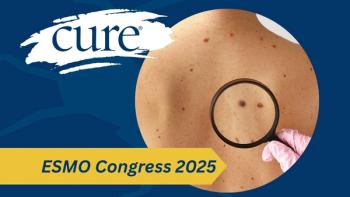
The Hard Truth About My Child’s Cancer
As a society, we shouldn't accept the "norm" of people younger than 50 receiving diagnoses or dying from cancer.
There have been many stories in the news in the last few years about younger celebrities with cancer, some of whom have died. Recent stories have highlighted that more and more young people are being diagnosed with early-onset cancer and many seem to think that the best response to this problem is lowering the screening age.
With everything I have experienced and seen on the news and social media in the last five years, my comment would be that with young adult patients with cancer, that may not matter.
Does screening save lives? Of course it does. When older women are diagnosed with breast cancer, it can often be slower growing, so if it’s caught in an early stage with screening, there is hope that treatment can offer a cure. When younger women are diagnosed, however, the cancer can be very aggressive and regardless of when it’s picked up by tests, it can already be too late.
My 27-year-old daughter’s breast tumor grew 18% and went from stage 1 to stage 2 with lymph node involvement in the three weeks from diagnosis to surgery. We were very lucky that the treatment matched her cancer, and she still has no evidence of disease (NED) four years later. My heart breaks at the number of young women I encounter who follow exactly the same treatment protocol as my daughter did and it fails them.
When something first happens, it can come as a shock, but after it happens repeatedly, the shock becomes more of an acknowledgment of “this is the way of things now.” An example of this might be to think of how we react to news stories of mass shootings at schools in 2024, in comparison to how the world reacted to Columbine 25 years ago. With more and more news stories reflecting cancer diagnoses and sometimes death of people under age 50, I can see how society will accept this as the new normal and believe that screening will save them.
And we shouldn’t.
My family lives with the likelihood that my daughter’s breast cancer will recur, or since she was treated so young, she may develop a secondary cancer associated with treatment. Because she is a candidate for regular screening, it may be found when it’s still in the breast, but we have been told to watch for symptoms such as bone pain and unexplained shortness of breath, indicating it has come back elsewhere. Since she was 27 years old when cancer happened the first time, statistically she could be well under age 50 if it happens again. We have no guarantee — if it recurs — that her initial treatment will work a second time around. We were just lucky that it did.
I try to add the image of a vibrant 20-something to the face of cancer and keep telling our story to raise awareness of how cancer in your 20s or 30s is not the same. The nature of cancer in young adults means that screening will not necessarily save my girl’s life or the lives of countless others like her. I understand how hard it can be to shift thinking. I know that it can take years for society to accept that what they have learned is not necessarily the truth, but the fact is that the treatments available often don’t address the reality that younger adults often potentially face more aggressive forms of the disease and screening them all wouldn’t change that.
I keep looking for news stories that speak to a new development in cancer research that will save my child’s life. Our hope rests in the idea that by the time her cancer recurs, there will be something out there that will stop it in its tracks because finding it early like she did the first time may not make any difference at all. And that’s such a hard truth to know.
For more news on cancer updates, research and education, don’t forget to





